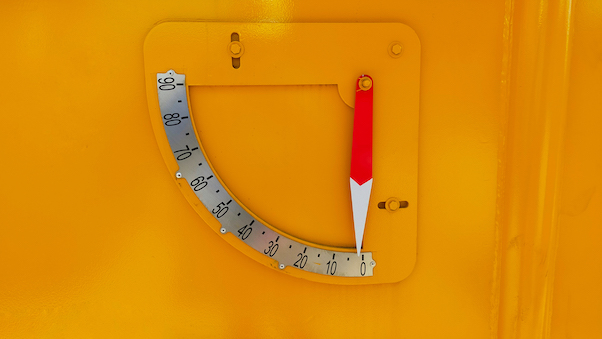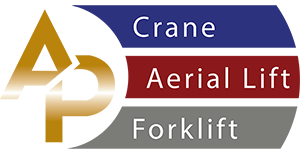Services
Aerial Lift TrainingForklift Operator Certification
Instructor Courses
Mobile Crane Operator Certification
Online Training
Crane Operator Training
Overhead Crane Training
Rigging and SignalPerson Training
All Purpose Crane Training offers crane operator training on-site or off-site. Providing National accredited crane operator certification meeting OSHA ANSI standards for crane operators to become certified.
1926.1401
1926.1402
1926.1403
1926.1404
1926.1405
1926.1406
1926.1407
1926.1408
1926.1409
1926.1410
1926.1411
1926.1412
1926.1413
1926.1414
1926.1415
1926.1416
1926.1417
1926.1418
1926.1419
1926.1420
1926.1421
1926.1422
1926.1423
1926.1424
1926.1425
1926.1426
1926.1427
1926.1428
1926.1429
1926.1430
1926.1431
1926.1432
1926.1433
1926.1434
1926.1435
1926.1436
1926.1437
1926.1438
1926.1439
1926.1440
1926.1441
1926.1442

- (a) The devices listed in this section (listed operational aids) are required on all equipment covered by this subpart, unless otherwise specified.
- (1) The requirements in paragraphs (e)(1), (e)(2), and (e)(3) of this section do not apply to articulating cranes.
- (2) The requirements in paragraphs (d)(3), (e)(1), and (e)(4) of this section apply only to those digger derricks manufactured after [INSERT DATE 1 YEAR AND 90 DAYS AFTER DATE OF PUBLICATION IN THE FEDERAL REGISTER]
- (b) Operations must not begin unless the listed operational aids are in proper working order, except where an operational aid is being repaired the employer uses the specified temporary alternative measures. The time periods permitted for repairing defective operational aids are specified in paragraphs (d) and (e) of this section. More protective alternative measures specified by the crane/derrick manufacturer, if any, must be followed.
- (c) If a listed operational aid stops working properly during operations, the operator must safely stop operations until the temporary alternative measures are implemented or the device is again working properly. f a replacement part is no longer available, the use of a substitute device that performs the same type of function is permitted and is not considered a modification under 1926.1434.
- (d) Category I operational aids and alternative measures. Operational aids listed in this paragraph that are not working properly must be repaired no later than 7 calendar days after the deficiency occurs. Exception: If the employer documents that it has ordered the necessary parts within 7 calendar days of the occurrence of the deficiency, the repair must be completed within 7 calendar days of receipt of the parts. See 1926.1417(j) for additional requirements.
- (1) Boom hoist limiting device.
- (i) For equipment manufactured after December 16, 1969, a boom hoist limiting device is required. Temporary alternative measures (use at least one). One or more of the following methods must be used:
- (A) Use a boom angle indicator:
- (B) Clearly mark the boom hoist cable (so that it can easily be seen by the operator) at a point that will give the operator sufficient time to stop the hoist to keep the boom within the minimum allowable radius. In addition, install mirrors or remote video cameras and displays if necessary for the operator to see the mark.
- (C) Clearly mark the boom hoist cable (so that it can easily be seen by a spotter) at a point that will give the spotter sufficient time to signal the operator and have the operator stop the hoist to keep the boom within the minimum allowable radius.
- (ii) If the equipment was manufactured on or before December 16, 1969, and is not equipped with a boom hoist limiting device, at least one of the measures in paragraphs (d)(1)(i)(A) through (C) of this section must be used.
- (2) Luffing jib limiting device. Equipment with a luffing jib must have a lufling jib limiting device. Temporary alternative measures are the same as in paragraph (d)(1)(i) of this section, except to limit the movement of the luffing jib rather than the boom hoist.
- (3) Anti two-blocking device.
- (i) Telescopic boom cranes manufactured after February 28, 1992, must be equipped with a device which automatically prevents damage from contact between the load block, overhaul ball, or similar component, and the boom tip (or fixed upper block or similar component). The device(s) must prevent such damage at all points where two-blocking could occur. Temporary alternative measures: Clearly mark the cable (so that it can easily be seen by the operator) at a point that will give the operator sufficient time to stop the hoist to prevent two-blocking, and use a spotter when extending the boom.
- (ii) Lattice boom cranes.
- (A) Lattice boom cranes manufactured after Feb 28, 1992, must be equipped with a device that either automatically prevents damage and load failure from contact between the load block, overhaul ball, or similar component, and the boom tip (or fixed upper block or similar component), or warns the operator in time for the operator to prevent two-blocking. The device must prevent such damage/failure or provide adequate warning for all points where two-blocking could occur.
- (B) Lattice boom cranes and derricks manufactured after [INSERT DATE 1 YEAR AND 90 DAYS AFTER DATE OF PUBLICATION IN THE FEDERAL REGISTER] must be equipped with a device which automatically prevents damage and load failure from contact between the load block, overhaul ball, or similar component, and the boom tip (or fixed upper block or similar component). The device(s) must prevent such damage/failure at all points where two-blocking could occur.
- (C) Exception. The requirements in paragraphs (d)(3)(ii)(A) and (B) of this section do not apply to such lattice boom equipment when used for dragline, clamshell (grapple), magnet, drop ball, container handling, concrete bucket, marine operations that do not involve hoisting personnel, and pile driving work.
- (D) Temporary alternative measures. Clearly mark the cable (so that it can easily be seen by the operator) at a point that will give the operator sufficient time to stop the hoist to prevent two-blocking, or use a spotter.
- (iii) Articulating cranes manufactured after December 31, 1999, that are equipped with a load hoist must be equipped with a device that automatically prevents damage from contact between the load block, overhaul ball, or similar component, and the boom tip (or fixed upper block or similar component). The device must prevent such damage at all points where two-blocking could occur. Temporary alternative measures: When two-blocking could only occur with movement of the load hoist, clearly mark the cable (so that it can easily be seen by the operator) at a point that will give the operator sufficient time to stop the hoist to prevent two-blocking, or use a spotter. When two-blocking could occur without movement of the load hoist, clearly mark the cable (so that it can easily be seen by the operator) at a point that will give the operator sufficient time to stop the hoist to prevent two-blocking, and use a spotter when extending the boom.
- (e) Category ll operational aids and alternative measures. Operational aids listed in this paragraph that are not working properly must be repaired no later than 30 calendar days after the deficiency occurs. Exception: If the employer documents that it has ordered the necessary parts within 7 calendar days of the occurrence of the deficiency, and the part is not received in time to complete the repair in 30 calendar days, the repair must be completed within 7 calendar days of receipt of the parts. See 1926.1417(j) for additional requirements.
- (1) Boom angle or radius indicator The equipment must have a boom angle or radius indicator readable from the operators station. Temporary alternative measures: Radii or boom angle must be determined by measuring the radii or boom angle with a measuring device.
- (2) Jib angle indicator if the equipment has a luffing jib. Temporary alternative measures: Radii or jib angle must be determined by ascertaining the main boom angle and then measuring the radii or jib angle with a measuring device.
- (3) Boom length indicator if the equipment has a telescopic boom, except where the rated capacity is independent of the boom length. Temporary alternative measures. One or more of the following methods must be used:
- (i) Mark the boom with measured marks to calculate boom length,
- (ii) Calculate boom length from boom angle and radius measurements.
- (iii) Measure the boom with a measuring device.
- (4) Measure the boom with a measuring device.
- (i) Equipment (other than derricks and articulating cranes) manufactured after March 29, 2003 with a rated capacity over 6,000 pounds must have at least one of the following: load weighing device, load moment (or rated capacity) indicator, or load moment (or rated capacity) limiter. Temporary alternative measures: The weight of the load must be determined from a source recognized by the industry (such as the loads manufacturer) or by a calculation method recognized by the industry (such as calculating a steel beam from measured dimensions and a known per foot weight). This information must be provided to the operator prior to the lift.
- (ii) Articulating cranes manufactured after [INSERT DATE 1 YEAR AND 90 DAYS AFTER DATE OF PUBLICATION IN THE FEDERAL REGISTER] must have at least one of the following: automatic overload prevention device, load weighing device, load moment (or rated capacity) indicator, or load moment (rated capacity) limiter. Temporary alternative measures: The weight of the load must be determined from a source recognized by the industry (such as the loads manufacturer) or by a calculation method recognized by the industry (such as calculating a steel beam from measured dimensions and a known per foot weight). This information must be provided to the operator prior to the lift.
- (5) The following devices are required on equipment manufactured after [lNSERT DATE 1 YEAR AND 90 DAYS AFTER DATE OF PUBLICATION IN THE FEDERAL REGISTER]:
-
(i) Outrigger/stabilizer position (horizontal beam extension) sensor/monitor if the equipment has outriggers or stabilizers. Temporary alternative measures: the operator must verify that the position of the outriggers or stabilizers is correct (in accordance with manufacturer procedures) before beginning operations requiring outrigger or stabilizer deployment.
-
(ii) Hoist drum rotation indicator if the equipment has a hoist drum not visible from the operators station. Temporary alternative measures: Mark the drum to indicate the rotation of the drum. In addition, install mirrors or remote video cameras and displays if necessary for the operator to see the mark.
